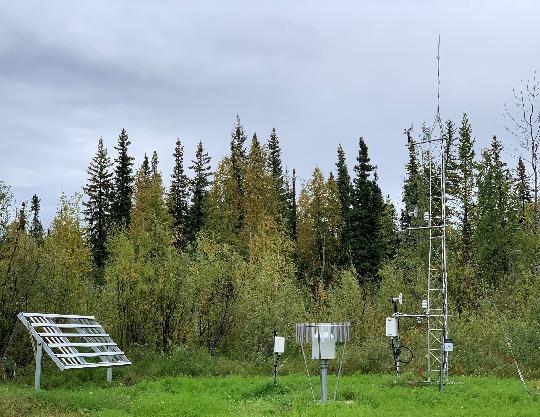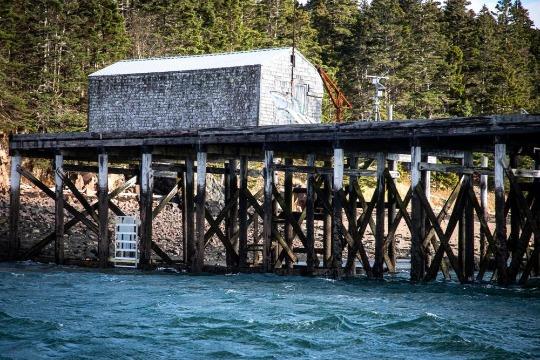The U.S. Army Engineer Research and Development Center’s (ERDC) Cold Regions Research and Engineering Laboratory (CRREL) in Hanover, N.H., has announced the creation of three new facilities on Treat Island, Maine; in Fairbanks, Alaska; and in Hanover. These facilities will test whether coatings can withstand, and even mitigate, ice adhesion and corrosion.
“These are enduring assets that will help us understand the durability of new coatings and surface treatments to transition these technologies to protect real assets in the field,” says Dr. Emily Asenath-Smith, research materials engineer and lead of CRREL’s ice adhesion facility.
“We’ll be tracking the weather, and we’ll have camera monitoring at each site, so researchers will have visual and meteorological data to pair with data on coating performance at each location,” she adds.
Multi-Year Collaboration
To establish the new facilities, Asenath-Smith collaborated over several years with ERDC’s Paint Technology Center of Expertise. That center is led by Dr. Rebekah Wilson, and it is located at the Construction and Engineering Research Laboratory (CERL) in Champaign, Illinois.
“CERL has had the capability to expose coatings to outdoor conditions in their environment for a long time,” Asenath-Smith says. “Across the Army and the federal government, the coldest place they’ve tested coating technologies is in Champaign, so our new facilities are a big expansion of capabilities.”
“This capability, to test coatings in these cold, tremendously inhospitable climates, is completely new for a federal laboratory,” Wilson explains. “This seems like it’s going to open up a lot of possibilities to develop new cold weather coating technologies.”
Prototype Racks

Located in Fairbanks, Alaska, USA, new testing facilities for coatings that may mitigate ice adhesion and corrosion have been established. Photo courtesy of U.S. Army ERDC.
The planning for the new facilities at the three locations started in 2019. From there, Asenath-Smith and her team deployed the first prototype rack on Treat Island, located in the Bay of Fundy off the coast of Eastport, Maine, in 2021.
“The Bay of Fundy is unique; it is the U.S.’s northern-most point off the Atlantic coast,” Asenath-Smith says. “It’s really rough out there, there is wave action and wind, and it’s completely exposed. The tide changes by 22 feet [6.7 m] at each cycle, and there are two cycles per day. The cold water gets icy in the winter, and in this environment, the coated test panels are exposed to cyclic immersion in salt water, freezing and thawing conditions, and solar irradiance. Some common estimates are that one year on Treat Island is equivalent to six years inland.”
“The first rack was deployed on Treat Island to see if it would still be standing and still have samples in it,” she adds. “After that first winter, not only was the rack still here, it had all the coated panels in it—they were just a little bent.”
A second, improved version, along with the weather and visual monitoring system, was just installed this past November.
“We had to build a monitoring system that will stand by itself, with no human interaction, for up to eight months,” says Olivier Montmayeur, a CRREL research mechanical engineer who retrofitted part of the facilities on Treat Island in November. “It’s always different between engineering from photos and actually getting your hands dirty and seeing what’s going on in person. We got there and had less than 30 minutes from the time we could get onto the lower dock to install the new rack, before it was completely submerged again.”
The facilities at Hanover were deployed in October 2022, while a system was erected in Fairbanks in August 2022.

New testing facilities to evaluate coating technologies were installed on Treat Island in the Bay of Fundy near Eastport, Maine, USA, in November 2022. The island’s cold weather testing facility was retrofitted with new equipment. Photo courtesy of U.S. Army ERDC.
Upcoming Projects
Asenath-Smith and her team already have projects slated for the next few years to take advantage of the new capabilities. Some of the testing they do before deploying the panels and after are related to how well the coating adheres to the metal of the panels, or how well the ice adheres to a surface after exposure.
“Our main customer right now for Treat Island is the Office of Naval Research,” she says. “We are assisting them with the assessment of coatings to control topside ship icing and icing on ship superstructures.” The ship superstructures she refers to are any parts of the ship above the deck.
The team has specimens from the National Institute of Standards and Technology at their Hanover site.
“And in Alaska, we have samples supporting a study for the Army,” Asenath-Smith says. “That study is related to the surfaces of modular, temporary bridging systems that the Army uses. The improved ribbon bridge in particular is one they’re interested in.”
The new capabilities could have civilian applications, as well.
“Once the military validates technology like this, it usually translates to civilian infrastructure,” says Dr. Joseph Corriveau, director of CRREL. “Imagine, if we can actually mitigate icing and corrosion on structures that are going to be exposed to cold climates, we can use that technology on municipal infrastructure, vessels like crabbing ships, and so on.”
Source: U.S. Army Corps of Engineers, www.erdc.usace.army.mil.